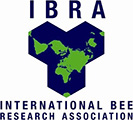Human dietary intake and hazard characterization for residue
In two recently published reports, hazards posed by dietary exposure to organophosphate and neonicotinoid plant protection products on the European honey bee (Apis mellifera L.) in Egypt were investigated. Using concentrations reported in those studies, an assessment of hazards posed by these two classes of insecticides to humans due to consumption of Egyptian honey from…






